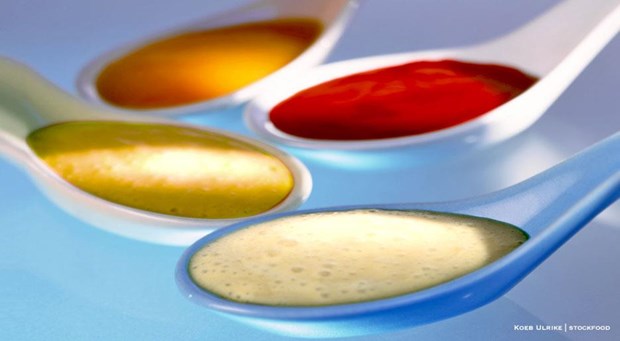
In
1854, French chef Marie-Antoine Carȇme published L’Art de la Cuisine Francaise
au Dix-Neuvieme Siecle, an encyclopedia of French cuisine and cooking that was
the first culinary cultural encyclopedia. Carȇme’s influence extended beyond recipes.
Starting life as a kitchen boy in a cheap chop house, he worked his way up to
becoming an expert patissiere, whose elaborate confections, some nearly a meter
tall and modelled on ancient ruins like the pyramids, drew gawking customers at
shop windows, before he rose to the status of must-have celebrity chef, cooking
for Napoleon, Talleyrand, King George IV of England, Tsar Alexander I of
Russia, and the Rothschilds. It is thanks to him that we eat our meals in
order, one course at a time (referred to as service a la Russe, as Carȇme
learned in Russia), as opposed to having all dishes served simultaneously
(service a la Francaise). He is also responsible for diverse menus and eating
seasonally—his employer, Talleyrand, challenged him to make a year-long menu,
with no dishes repeated, and all ingredients both local and seasonal.
Among
his many accomplishments, he wrote of what he considered the four “mother
sauces,” sauces that form the base from which countless variations can be
prepared. Carȇme’s mother sauces were espagnole, veloute, béchamel and
allemande. In 1903, Carȇme’s bible of French cuisine was updated by chef
Auguste Escoffier, whose monumental Le Guide Culinaire is still required
reading for every student of cookery the world over. Born in Nice, Escoffier
worked for hotelier Cesar Ritz in Monte Carlo and Lucerne, and brought haute
French cuisine to London, when he and Ritz were invited by Richard D’Oyly Carte
to run the Savoy Hotel—he would later become chef of the Ritz and Carlton
hotels. Part of Escoffier’s modernization was a shift in what he considered to
be mother sauces. Allemande, he argued, was really just a “daughter” of
veloute, and should be downgraded. But he added two more in its place:
hollandaise and sauce tomate. Hollandaise, part of the egg-based range of
–aises, I discussed in a previous article, so we’ll set that aside. Because
we’ve got another four mother sauces to examine.
Five Mother Sauces: Béchamel
It’s
a running joke that just about any traditional French recipe begins with “make
a roux,” but the mixture of butter and flour provides unctuous body to anything
added to it. Throw some milk into a roux, and you’ve got béchamel. This is the
base for scores of “daughter” sauces, like Mornay (béchamel + gruyere and egg
yolk) and mustard sauce (béchamel + mustard) and soubise (béchamel + diced
onions). It is named after the chief steward to King Louis XIV, though no one
knows why, and it first appears in Le Cuisinier Francois, published in 1651.
For each cup of milk in the sauce, there is 1-3 tablespoons for butter and
flour mixed in (depending on how thick you’d like it).
Five Mother Sauces:
Espagnole
Espagnole,
aka “brown sauce,” is the mother to hundreds of children, and is more of a
starting point than something consumed as is. It begins with a dark brown roux,
adding veal stock, bones and pieces of beef and vegetables—a miniature,
concentrated stew, with tomato paste added at the end, before the sauce is
skimmed and strained. Why it is called “Spanish” sauce is a matter of debate:
one source says that it is because the Spanish chefs who came with Louis XIII’s
bride insisted on kicking the French sauces for the wedding up a notch by
adding Spanish tomatoes, while another says the use of meat in the sauce comes
from a French craze for Spanish bacon and ham from Montanches. Take espagnole
and reduce its liquidity by half, and you have a demi-glace. Add African or
creole seasonings to it, and you’ve got Sauce Africaine. Add red wine and
shallots, parsley, thyme and bay leaf, and you’ve got Sauce Bourguignonne.
Five Mother Sauces:
Veloute
The
so-called “velvet” sauce is made of chicken or fish bones that have not been
first roasted (which would darken it), but are rather lighter in color and are
mixed with a blond roux. Yes, you cannot escape roux when dealing with French
sauces, nor should you. Roux takes a flavor and sauce-ifies it, so we might
call roux the proto-mother sauce, since it is the true starting point of the
mother sauces. Veloute couldn’t be simpler, and is the starting point for many
variations, including Sauce Allemade, which Escoffier downgraded to a daughter
sauce, since it is a veloute with the addition of lemon juice, cream and egg
yolks. Other daughters include Sauce Ravigote (veloute + lemon and shallots),
Sauce Supreme (veloute + cream and mushroom liquor), Sauce Normande (veloute +
cream, butter and egg yolk) and Sauce Hungarian (veloute + paprika, onion and
white wine).
Five Mother Sauces:
Sauce Tomate

Tomato
sauce may sound awfully simple, but Escoffier’s is not. Of course, it begins
with a roux, but the flavor comes from salted pork belly, onions, bay leaf,
sugar, pepper, salt, garlic, thyme and fresh tomatoes. Surely a sauce made just
of roux and tomatoes would be more of a “mother,” as Escoffier’s is really
quite specific, but he’s no longer around for us to argue. His inclusion of
this inherently Italian sauce was progressive, as the French scoffed at the
Italians and their so-called “cuisine,” thinking of them as second-class
citizens when Escoffier was writing. All manner of daughter sauces emerges,
like Sauce Bolognese (with minced meat, carrots, celery and onion), various hot
sauces (with your choice of chili and vinegar added), or even more modern
concoctions, like the Anglo-Indian favorite, tikka masala. It’s great practice
for amateur chefs hoping to hone their skills to try their hand at Escoffier’s
mother sauces. You’ll make a lot of roux, then mother sauces, and then take
them in any direction you like. Master them, and the world of sauce is at your
fingertips. Just be careful not to burn your roux…
By FDL